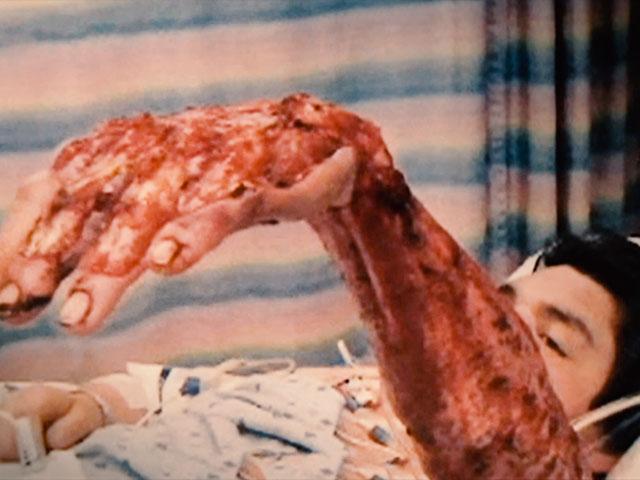A Texas man is in danger of losing his leg to a flesh eating bacteria, after another man from the lone star state had his leg amputated last week for the same reason.
Flesh eating bacteria infect about a thousand Americans every year, killing a third of them.
The latest victim is Adrian Ruiz, who was enjoying the gulf coast waters fishing and relaxing with his family on Father's Day. Little did he know that a bacteria invaded his body, most likely through an open wound, and began aggressively attacking his skin cells and those right under the skin.
Ruiz wisely sought medical attention immediately after experiencing a headache and a rash. Other symptoms of a flesh eating bacteria infection include vomiting, swelling, diarrhea and skin ulcers, also pain that intensifies around a wound.
Doctors admitted Ruiz into the intensive care unit and placed him on intravenous antibiotics, which so far have successfully controlled the spread of the infection. Doctors are hoping they will not have to amputate Ruiz's leg.
"He's going to live, that's the main thing," Ruiz's wife, Lashelle Ruiz told Fox 7. "So at least he has life still that's the biggest thing of all. We believe in God, and we just ask people to pray because that's what will get him through."
Ruiz also set up a YouCaring page to help with medical expenses.
Flesh eating bacteria, also known as Vibrio bacteria, are often lurking in salt water as well as brackish water (a mixture of salt and fresh water). The bacteria often enter the body through an open cut or abrasion. Therefore, doctors caution against entering the water if you have large, open wounds. However, not all wounds are visible, so as a precaution, everyone should shower with soap as soon as possible after being in the water.
Flesh eating bacteria can also enter humans when people consume raw or undercooked shellfish that have been exposed to the bacteria. For that reason, doctors advise against eating raw oysters and suggest thoroughly cooking, shrimp, crab and other seafood. Oftentimes, steaming or quick boiling doesn't kill the bacteria.
Once infected, the bacteria moves quickly through the body, killing the infected tissue. Therefore, the sooner the patient can seek medical attention, the greater the chance for survival.
Sometimes it's necessary to remove (amputate) infected areas to prevent the spread of the infection. The bacteria can also find its way into the bloodstream and move throughout the entire body.










